Wound Healing
How to submit an article:
- Registered users can submit any published journal article that has a unique DOI (Digital Object Identifier) name or link to Research Hub.
- For example, you can paste the full DOI link:
https://doi.org/10.1109/5.771073or just the DOI name:10.1109/5.771073into the field above and click submit. - The person who is first to submit a valid article to Research Hub will forever be credited for it, and every article submission earns you +6 Research Points.
Related Topics
Published research studies are articles that present the findings of original research that has undergone a peer-review process and has been made publicly available in scholarly journals, books or other media.
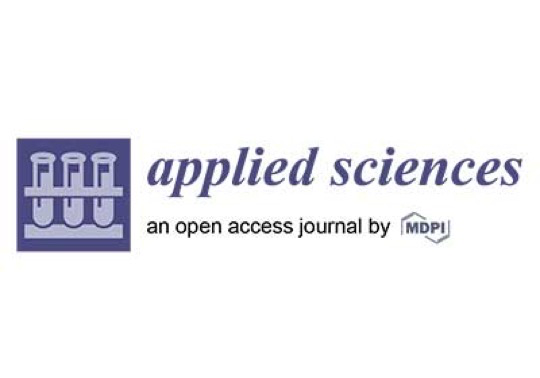
Honey Therapy in Diabetic Foot Ulcers: A Promising Strategy for Effective Wound Healing
2023 Nov 29 Applied Sciences Bezerra A, Fonseca H, Rodrigues F, Delerue-Matos C, Gouvinhas I, Garcia J
Review Article Wound HealingHoney accelerates the healing of diabetic foot ulcers, reduces wound size, and lowers the rates of amputation or hospitalisation, making it a cost-effective and safe treatment.
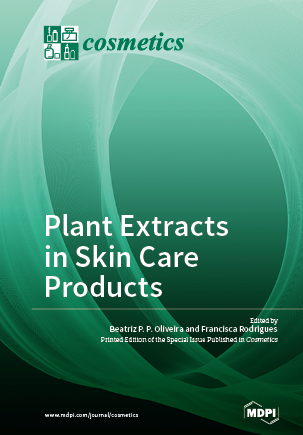
Effect of Phenolic Compounds Extracted from Turmeric (Curcuma longa L.) and Ginger (Zingiber officinale) on Cutaneous Wound Healing in Wistar Rats
2023 Oct 02 Cosmetics Bouchama C, Zinedine A, Rocha JM, Chadli N, El Ghadraoui L, Chabir R, et al.
Experimental Study Animal Study GingerPhenolic extracts from turmeric and ginger have significant anti-inflammatory effects and enhance wound healing in Wistar rats.

A Comprehensive Review of the Effect of Honey on Human Health
2023 Jul 06 Nutrients Palma-Morales M, Huertas JR, Rodríguez-Pérez C
Review Article HoneyHoney intake has observed beneficial effects on various health aspects like cardiovascular, metabolic risk factors, and wound healing, primarily replacing other sweeteners.
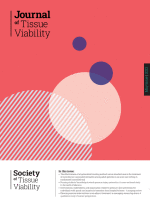
Use of honey in diabetic foot ulcer: Systematic review and meta-analysis
2023 May Journal of Tissue Viability Yildiz Karadeniz E, Kaplan Serin E
Systematic Review Meta-Analysis Diabetic Foot Ulcer Honey Wound HealingHoney dressing significantly promotes healing and reduces recovery time in managing diabetic foot ulcers.
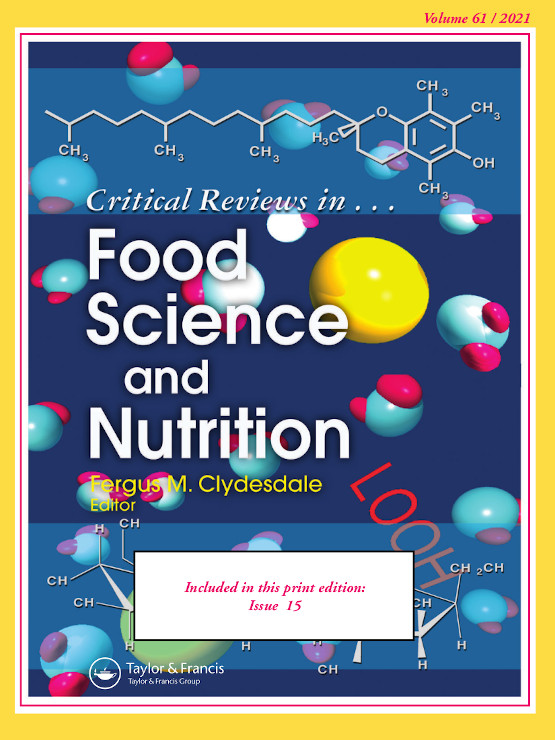
Black soybean (Glycine max(L.) Merr.): paving the way toward new nutraceutical
2022 Feb 10 Critical Reviews in Food Science and Nutrition Kumar M, Suhag R, Hasan M, Dhumal S, Radha , Pandiselvam R, et al.
Review Article Black SoybeanModern extraction techniques improve the extraction of bioactive compounds from black soybeans, which have potential use in functional foods and nutraceutical components.
Research insights are moderated by the Research Hub team and offer an at-a-glance overview of interesting research findings.

2023 Applied Sciences
Honey accelerates the healing of diabetic foot ulcers, reduces wound size, and lowers the rates of amputation or hospitalisation, making it a cost-effective and safe treatment.
Review Article
Honey Therapy in Diabetic Foot Ulcers: A Promising Strategy for Effective Wound Healing
Bezerra A, Fonseca H, Rodrigues F, Delerue-Matos C, Gouvinhas I, Garcia J

2023 Cosmetics
Phenolic extracts from turmeric and ginger have significant anti-inflammatory effects and enhance wound healing in Wistar rats.
Experimental Study Ginger
Effect of Phenolic Compounds Extracted from Turmeric (Curcuma longa L.) and Ginger (Zingiber officinale) on Cutaneous Wound Healing in Wistar Rats
Bouchama C, Zinedine A, Rocha JM, Chadli N, El Ghadraoui L, Chabir R, et al.

2023 Nutrients
Honey intake has observed beneficial effects on various health aspects like cardiovascular, metabolic risk factors, and wound healing, primarily replacing other sweeteners.
Review Article Honey
A Comprehensive Review of the Effect of Honey on Human Health
Palma-Morales M, Huertas JR, Rodríguez-Pérez C

2023 Journal of Tissue Viability
Honey dressing significantly promotes healing and reduces recovery time in managing diabetic foot ulcers.
Systematic Review Diabetic Foot Ulcer Honey
Use of honey in diabetic foot ulcer: Systematic review and meta-analysis
Yildiz Karadeniz E, Kaplan Serin E

2022 Critical Reviews in Food Science and Nutrition
Modern extraction techniques improve the extraction of bioactive compounds from black soybeans, which have potential use in functional foods and nutraceutical components.
Review Article Black Soybean
Black soybean (Glycine max(L.) Merr.): paving the way toward new nutraceutical
Kumar M, Suhag R, Hasan M, Dhumal S, Radha , Pandiselvam R, et al.
Review Articles
Review articles summarise and critically evaluate the current state of research on a specific topic or field by synthesising multiple primary research studies.

Honey Therapy in Diabetic Foot Ulcers: A Promising Strategy for Effective Wound Healing
2023 Nov 29 Applied Sciences Bezerra A, Fonseca H, Rodrigues F, Delerue-Matos C, Gouvinhas I, Garcia J
Review Article Wound HealingHoney accelerates the healing of diabetic foot ulcers, reduces wound size, and lowers the rates of amputation or hospitalisation, making it a cost-effective and safe treatment.

A Comprehensive Review of the Effect of Honey on Human Health
2023 Jul 06 Nutrients Palma-Morales M, Huertas JR, Rodríguez-Pérez C
Review Article HoneyHoney intake has observed beneficial effects on various health aspects like cardiovascular, metabolic risk factors, and wound healing, primarily replacing other sweeteners.

Use of honey in diabetic foot ulcer: Systematic review and meta-analysis
2023 May Journal of Tissue Viability Yildiz Karadeniz E, Kaplan Serin E
Systematic Review Meta-Analysis Diabetic Foot Ulcer Honey Wound HealingHoney dressing significantly promotes healing and reduces recovery time in managing diabetic foot ulcers.

Black soybean (Glycine max(L.) Merr.): paving the way toward new nutraceutical
2022 Feb 10 Critical Reviews in Food Science and Nutrition Kumar M, Suhag R, Hasan M, Dhumal S, Radha , Pandiselvam R, et al.
Review Article Black SoybeanModern extraction techniques improve the extraction of bioactive compounds from black soybeans, which have potential use in functional foods and nutraceutical components.
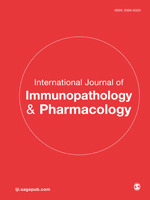
A review on the production, structure, bioactivities and applications of Tremella polysaccharides
2021 Apr 16 International Journal of Immunopathology and Pharmacology Ma, X., Yang, M., He, Y., et al.
Systematic Review Meta-Analysis Polysaccharides Snow FungusTremella polysaccharide is a safe natural active ingredient, which can be used in the prevention, treatment and rehabilitation of diseases.
Clinical Trials
Clinical trials are research studies that involve people and are conducted to evaluate the safety and efficacy of new treatments or interventions, such as drugs, medical devices, or behavioural therapies.
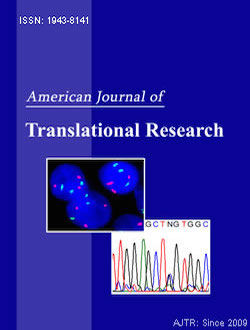
The effects of modified Buzhong Yiqi decoction combined with Gangtai ointment on the wound healing and anal function in circumferential mixed hemorrhoid patients
2021 Jul 15 American Journal of Translational Research Lu B, Du J, Wu X
Randomised Controlled Trial Gang Tai Ointment Bu Zhong Yi Qi Tang Wound HealingUsing a combined treatment of modified Buzhong Yiqi decoction and Gangtai ointment improves wound healing and anal function for circumferential mixed hemorrhoid patients.
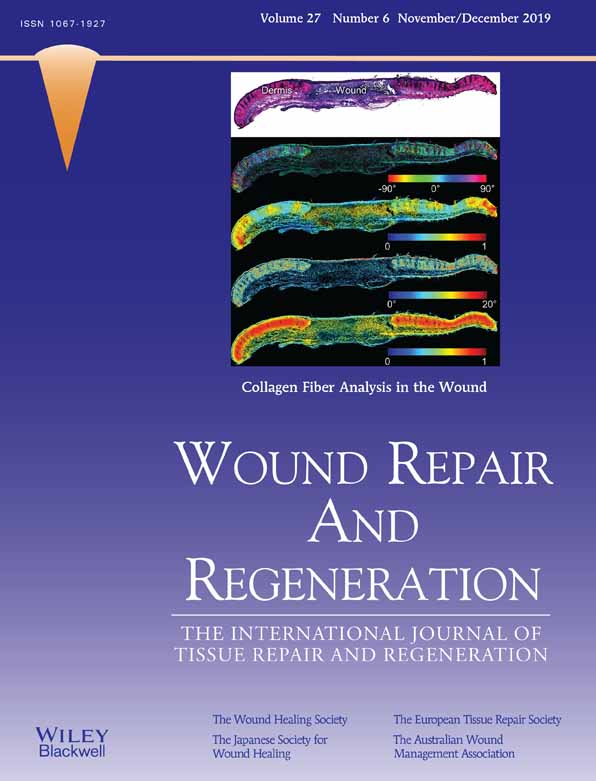
The beneficial effect of traditional Japanese herbal (Kampo) medicine, Hochu‐ekki‐to (Bu‐Zhong‐Yi‐Qi‐Tang), for patients with chronic wounds refractory to conventional therapies: A prospective, randomized trial
2019 Aug 09 Wound Repair and Regeneration Akita S, Namiki T, Kawasaki Y, Rikihisa N, Ogata H, Tokumoto H, et al.
Randomised Controlled Trial Wound Healing MalnutritionThe herbal medicine Bu Zhong Yi Qi Yang can potentially promote healing in chronic wounds resistant to standard treatments, especially in malnourished patients.
Study Protocols
Published study protocols are detailed plans that outline the objectives, methodology, statistical analyses, and organisation of a research study that have been made publicly available for others to review and use as a reference.
Presentation Slides

Review Article
Honey accelerates the healing of diabetic foot ulcers, reduces wound size, and lowers the rates of amputation or hospitalisation, making it a cost-effective and safe treatment.
Bezerra A, Fonseca H, Rodrigues F, Delerue-Matos C, Gouvinhas I, Garcia J

Experimental Study
Phenolic extracts from turmeric and ginger have significant anti-inflammatory effects and enhance wound healing in Wistar rats.
Bouchama C, Zinedine A, Rocha JM, Chadli N, El Ghadraoui L, Chabir R, Raoui SM, Errachidi F

Review Article
Honey intake has observed beneficial effects on various health aspects like cardiovascular, metabolic risk factors, and wound healing, primarily replacing other sweeteners.
Palma-Morales M, Huertas JR, Rodríguez-Pérez C

Systematic Review
Honey dressing significantly promotes healing and reduces recovery time in managing diabetic foot ulcers.
Yildiz Karadeniz E, Kaplan Serin E

Review Article
Modern extraction techniques improve the extraction of bioactive compounds from black soybeans, which have potential use in functional foods and nutraceutical components.
Kumar M, Suhag R, Hasan M, Dhumal S, Radha , Pandiselvam R, Senapathy M, Sampathrajan V, Punia S, Sayed AAS, Singh S, Kennedy JF

Randomised Controlled Trial
Using a combined treatment of modified Buzhong Yiqi decoction and Gangtai ointment improves wound healing and anal function for circumferential mixed hemorrhoid patients.
Lu B, Du J, Wu X

Systematic Review
Tremella polysaccharide is a safe natural active ingredient, which can be used in the prevention, treatment and rehabilitation of diseases.
Ma, X., Yang, M., He, Y., Zhai, C., & Li, C.
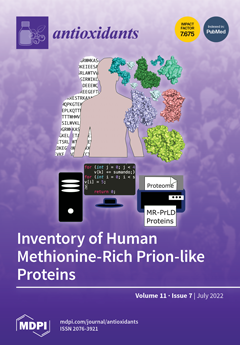
Experimental Study
Pomegranate juice extract (PPJE) appears to reduce chemotherapy-induced skin side effects by inhibiting inflammation and promoting wound repair on the skin.
Rapa SF, Magliocca G, Pepe G, Amodio G, Autore G, Campiglia P, Marzocco S
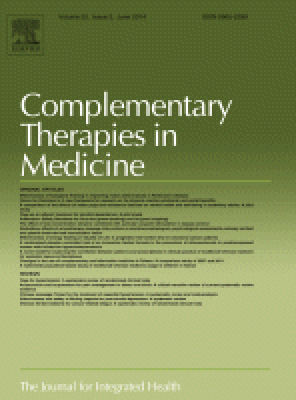
Systematic Review
Lavender demonstrates significant benefits for pain relief and episiotomy wound healing in postpartum.
Abedian S, Abedi P, Jahanfar S, Iravani M, Zahedian M

Randomised Controlled Trial
The herbal medicine Bu Zhong Yi Qi Yang can potentially promote healing in chronic wounds resistant to standard treatments, especially in malnourished patients.
Akita S, Namiki T, Kawasaki Y, Rikihisa N, Ogata H, Tokumoto H, Tezuka T, Kubota Y, Kuriyama M, Nakamura M, Mitsukawa N
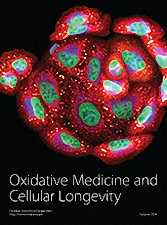
Review Article
Honey, a natural food supplement, emerges as a potent therapeutic antioxidant with diverse medicinal effects, including wound healing, antibacterial, anti-inflammatory, antifungal, antiviral, and antidiabetic properties, suggesting its potential as a novel antioxidant in managing oxidative stress-related diseases.
Ahmed S, Sulaiman SA, Baig AA, Ibrahim M, Liaqat S, Fatima S, Jabeen S, Shamim N, Othman NH

Review Article
Honeybee products like honey, propolis, and royal jelly have demonstrated potential benefits in treating metabolic diseases, cancers, and other illness types.
Pasupuleti VR, Sammugam L, Ramesh N, Gan SH
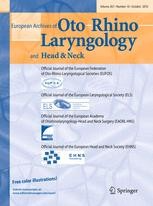
Systematic Review
Administering honey postoperatively can significantly lessen pain and foster improved wound healing following tonsillectomy.
Hwang SH, Song JN, Jeong YM, Lee YJ, Kang JM
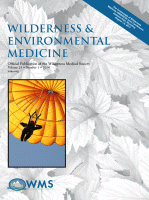
Review Article
Honey has shown to be a safe and occasionally superior treatment for various wounds compared to current treatments, even in wilderness environments.
Stewart JA, McGrane OL, Wedmore IS
Executive Summary
Write an executive summary in the form of a blog article on the topic of "Research into Chinese medicine treatment for Wound Healing" summarising the research below and using language that can be easily understood by patients and avoiding medical jargon using a professional and caring tone of voice.
Write an executive summary in the form of a blog article on the topic of "Researched Chinese medicine treatments for Wound Healing" summarising the research below in an objective and easy to understand way, and using language that can be easily understood by patients. Group the article into Chinese medicine treatments first, followed by nutrition and other treatments. Avoid using medical jargon and use a professional and caring tone of voice.
Write me a concise but easy to understand executive summary on the topic of "Chinese medicine treatments for Wound Healing" based on the following research that I will give you. Your summary should be 2 paragraphs long in Australian English spelling and include references to the studies.
A Review Article published in 2023 in the journal Applied Sciences found that Honey accelerates the healing of diabetic foot ulcers, reduces wound size, and lowers the rates of amputation or hospitalisation, making it a cost-effective and safe treatment. The methodology of the review incorporated studies exploring the effects of honey on wound healing, emphasizing its impact on diabetic foot ulcers (DFUs). Different types of honey and their potential influence on treatment efficacy were considered. The review also scrutinised the mechanisms by which honey promotes wound healing and how honey dressings are utilized in the management of diabetic wounds. Nonetheless, it was noted that few of the studies provided comprehensive data regarding the specific characteristics of the employed honey, affecting the comparison across honey types. The discussion of the results found in most clinical studies indicated that DFUs treated with honey resulted in rapid wound healing, substantial wound contraction, and decreased rates of amputation or hospitalisation. The properties of honey - serving as an effective antibacterial agent against multidrug-resistant bacteria and fostering wound healing through its physical-chemical attributes - were found to be the underlying reasons for these positive outcomes. Furthermore, honey was deemed to be a cost-effective and safe option for managing DFUs.
A Experimental Study published in 2023 in the journal Cosmetics found that Phenolic extracts from turmeric and ginger have significant anti-inflammatory effects and enhance wound healing in Wistar rats. The study utilised the solid-liquid extraction method to obtain phenolic extracts from turmeric and ginger rhizomes. Using Wistar rats as a biological model, the researchers examined the anti-inflammatory effects of the extracts by observing the decrease in edema volume in the rat's hind paw following treatment. Moreover, the healing process of purposefully induced burns on the rat's dorsal region was monitored to evaluate the healing activity. In the discussion of the results, it was observed that the application of creams containing the mentioned extracts resulted in complete healing after 19 days, a marked improvement compared to the control group, which only achieved 60% healing. The extracts demonstrated different levels regarding tissue repair at day 14, showing their respective potency. The study also identified diverse molecular weight distribution of phenolic compounds within the extracts, suggesting potential influence on how they affect anti-inflammatory and wound healing activities.
A Review Article published in 2023 in the journal Nutrients found that Honey intake has observed beneficial effects on various health aspects like cardiovascular, metabolic risk factors, and wound healing, primarily replacing other sweeteners. In this comprehensive review study, the researchers went beyond just looking at one or two aspects of health; instead, they embarked on an ambitious task of reviewing forty-eight clinical trials that were published between 1985 and 2022, involving a total of 3655 subjects. The researchers aimed to critically analyze the effect of honey on multiple health indices, including, but not limited to, cardiovascular and metabolic risk factors, glucose tolerance, mucositis inflicted by chemo-radiotherapy, cough in children, and wound healing. The evaluation and analysis of the data involved a thorough examination of the results of each of the clinical trials, consideration of several potential variables, and detailed cross-study comparisons. This broad and deep investigation allowed the researchers to draw correlations and pinpoint the beneficial influences of honey, considered a nutritious and natural food. The results from these clinical trials saw more beneficial effects on health from honey intake when compared to neutral or negative outcomes. It was most notably effective, particularly when used as a substitute for other sweeteners. The review also pointed out the potential use of honey as a safe adjuvant to be used in combination with drugs for specific illnesses. Confidently stating that honey has clear benefits in the clinical trials analyzed, the researchers fostered a promising narrative for the further exploration and acceptance of honey as a health booster.
A Systematic Review published in 2023 in the journal Journal of Tissue Viability found that Honey dressing significantly promotes healing and reduces recovery time in managing diabetic foot ulcers. For the research methodology, the study used a combination of randomized controlled trials, quasi-experimental, and cross-sectional studies. Only the randomized controlled trials and quasi-experimental studies were chosen for the meta-analysis, while observational studies were subject to a descriptive analysis. In terms of the results discussion, the meta-analysis indicated that using honey as a dressing for diabetic foot ulcers resulted in a reduction in wound recovery time, pain experienced, duration of hospital stay, and an acceleration in wound granulation. Therefore, it was concluded that honey dressing is an effective intervention for accelerating healing in diabetic foot ulcers.
A Review Article published in 2022 in the journal Critical Reviews in Food Science and Nutrition found that Modern extraction techniques improve the extraction of bioactive compounds from black soybeans, which have potential use in functional foods and nutraceutical components. These modern extraction techniques involve the application of technologies such as microwaves, ultrasounds, and enzymes. Contrary to traditional methods that depend on simple yet toxic solvents, these contemporary options yield higher amounts of bioactive substances from black soybeans, are quicker, and are less damaging to the environment. The exact bioactive compounds extracted include anthocyanins, phenolic acids, isoflavones, and flavones, among others. Researchers discovered that black soybeans, and specifically their seed coat, are rich in various bioactive compounds. These compounds have been reported to possess numerous health benefits, showing antioxidant, anti-cancer, anti-diabetic, anti-obesity, anti-inflammatory, cardio and neuroprotective activities. The study also explores how these soybean extracts have been used in the manufacture of food products like noodles, in the development of biodegradable films with pH sensitivity, and in therapeutic applications such as promoting wound healing and alleviating inflammation. The comprehensive review, therefore, serves as a handy reference for food manufacturers and scientists, showcasing the vast potential of black soybeans in the development of functional foods and nutraceuticals.
A Randomised Controlled Trial published in 2021 in the journal American Journal of Translational Research found that Using a combined treatment of modified Buzhong Yiqi decoction and Gangtai ointment improves wound healing and anal function for circumferential mixed hemorrhoid patients. The researchers enrolled 120 patients with circumferential mixed hemorrhoids into this trial. After undergoing a surgical procedure, these participants were randomly sorted into two groups for treatment. The control group received chitosan hydrogels for wound healing on a daily basis. Meanwhile, the research group was treated with a daily oral dose of modified Buzhong Yiqi decoction together with Gangtai ointment applied externally twice a day for two weeks. Observations for comparison between groups included effective rates, pain indexes, perianal edema scores, quality of life score, wound healing and pain resolution times, anal functions, wound exudate scores, as well as adverse reactions. In comparing the results of the experiment, it was found that the modified Buzhong Yiqi and Gangtai ointment combination gave better results across most measured outcomes. The research group showed a higher effective rate, reduced pain, and less perianal edema. The group's quality of life was improved, and their wounds healed more quickly with less pain experienced during recovery. Being able to maintain anal function was found to be more successful in the research group, and they had fewer incidences of adverse reactions. Furthermore, changes in wound exudate scores at 7 and 14 days post-treatment were lesser than those observed in the control group.
A Systematic Review published in 2021 in the journal International Journal of Immunopathology and Pharmacology found that Tremella polysaccharide is a safe natural active ingredient, which can be used in the prevention, treatment and rehabilitation of diseases. Tremella polysaccharide is a full-functioning active substance, and any of its activities are not independent, but complementary to other activities. For example, Tremella polysaccharides can participate in various physiological activities such as type II diabetes, cardiovascular disease, metabolic syndrome, inflammation and aging by regulating the expression of SIRT1 protein, which is in line with the guidelines of eastern medicine to maintain the dynamic balance of the human body through conditioning. Tremella polysaccharides are non-toxic and harmless natural ingredients that can be used for long-term contact with the human body by smearing or oral administration. It means that Tremella polysaccharides are suitable for the daily health needs of sub-healthy people and can be widely used in food, medicine and daily chemical products.
A Experimental Study published in 2021 in the journal Antioxidants found that Pomegranate juice extract (PPJE) appears to reduce chemotherapy-induced skin side effects by inhibiting inflammation and promoting wound repair on the skin. In this study, the impact of pomegranate (L.) juice extract (PPJE) on skin cells treated with 5-Fluorouracil (5-FU), an antineoplastic agent, was evaluated. This involved assessing the extract's ability to inhibit the release of reactive oxygen species and enhance the cellular antioxidant response of the treated skin cells. Specific attention was given to observe the overexpression of cytoprotective enzymes such as heme oxygenase-1 and NAD(P)H dehydrogenase [quinone] 1 after the introduction of PPJE. The results indicated that PPJE indeed blocked the formation of nitrotyrosine and reduced the release of cytokines, therefore indicating a dampened inflammatory response. Furthermore, it was revealed that the extract could inhibit the nuclear translocation of p65-NF-κB, a key regulator of inflammation. The study also pointed out that PPJE could curb apoptosis in cells treated with 5-FU, whilst fostering wound repair. The overall findings suggest that PPJE holds potential as a supplementary agent for managing oxidative and inflammatory issues associated with chemotherapy-induced skin side effects.
A Systematic Review published in 2020 in the journal Complementary Therapies in Medicine found that Lavender demonstrates significant benefits for pain relief and episiotomy wound healing in postpartum. This systematic review, conducted in accordance with PRISMA guidelines and registered in PROSPERO, analyzed six studies after screening 57 potentially relevant ones. Lavender was found to significantly reduce pain and accelerate healing of episiotomy wounds. Perineal pain, often stemming from perineal trauma like episiotomies, can impede mobility and daily activities for postpartum mothers. The study suggests routine Lavender use post-delivery for potential benefits, but acknowledges the need for further research due to observed heterogeneity in results. It emphasizes caution in interpreting Lavender's effects on episiotomy healing.
A Randomised Controlled Trial published in 2019 in the journal Wound Repair and Regeneration found that The herbal medicine Bu Zhong Yi Qi Yang can potentially promote healing in chronic wounds resistant to standard treatments, especially in malnourished patients. In this investigation, a prospective, randomized trial was conducted on 18 patients with unresponsive chronic wounds. These patients were split into two groups: a medication group treated daily with 7.5g of oral Hochu-ekki-to, and a control group who didn't receive this treatment. The status of wound healing was assessed over a 12-week period, where it was scored based on factors such as depth, inflammation/infection, size, granulation tissue, necrotic tissue, exudate, and pocket size. In the study, all patients in the medication group showed progress in wound healing at the end of 12 weeks. Conversely, only three patients in the control group showed comparable progress. This marked healing in the medication group was significantly noticeable after the 8-week mark. Hence, the study concluded that Hochu-ekki-to can be considered a beneficial adjunct therapy in managing chronic wounds, especially for patients suffering from malnutrition.
A Review Article published in 2018 in the journal Oxidative Medicine and Cellular Longevity found that Honey, a natural food supplement, emerges as a potent therapeutic antioxidant with diverse medicinal effects, including wound healing, antibacterial, anti-inflammatory, antifungal, antiviral, and antidiabetic properties, suggesting its potential as a novel antioxidant in managing oxidative stress-related diseases. The research extensively reviews honey's medicinal effects, emphasizing its role as a therapeutic antioxidant. The study explores various mechanisms, including the modulation of multiple signaling pathways and molecular targets. The evidence-based research underscores honey's role in alleviating diseases linked to oxidative stress. The reviewed pathways include caspase induction, cytokine stimulation, cell cycle regulation, and modulation of inflammatory markers. The comprehensive exploration of honey's therapeutic potential indicates its promise as a standalone or adjuvant antioxidant, necessitating further experimental and clinical investigation.
A Review Article published in 2017 in the journal Oxidative Medicine and Cellular Longevity found that Honeybee products like honey, propolis, and royal jelly have demonstrated potential benefits in treating metabolic diseases, cancers, and other illness types. The research reviewed the effects and mechanisms of honey, propolis, and royal jelly on various health conditions. Their uses in correlation to metabolic diseases and different types of cancers were meticulously explored. Honey was examined for its microbial inhibiting and wound healing properties and its role in treating other diseases. The study found that honey demonstrated potential benefits such as microbial inhibition, wound healing, and effects on other diseases. Propolis was reported to have various health benefits related to gastrointestinal disorders, allergies, and issues related to gynecology, oral health, and dermatology. Royal jelly displayed protective effects on reproductive health, neurodegenerative disorders, wound healing, and aging. While these were potential benefits and effects elucidated, the specific mechanisms of action remain undetermined.
A Systematic Review published in 2014 in the journal European Archives of Oto-Rhino-Laryngology found that Administering honey postoperatively can significantly lessen pain and foster improved wound healing following tonsillectomy. The methodology for this research consisted of an in-depth systematic review, complemented by a meta-analysis, focused on the effectiveness of honey used as a treatment for postoperative pain and wound healing following tonsillectomy. Following the independent exploration of database records, including MEDLINE, SCOPUS, and Cochrane databases, by two authors, studies that compared postoperative oral administration of honey to placebo were pinpointed, with the outcomes of interest being pain and wound healing on post-operative days. Criteria for data extraction included baseline study characteristics, study quality, patient numbers in honey-treated and control groups, and outcomes of treatment. Across the selected 4 trials, a total of 264 patients provided sufficient data for conducting the meta-analysis. Discussion of the research findings revealed that the honey-treated group experienced a significant decrease in pain during postoperative day 1, in comparison to the placebo-treated group, as rated by patient-reported pain scores. The analgesic intake for the honey-treated group during the first five days after the operation was also markedly reduced compared to that of the placebo-treated group. Moreover, significantly enhanced wound healing was observed two weeks post-operation for the patients treated with honey compared to those given a placebo.
A Review Article published in 2014 in the journal Wilderness & Environmental Medicine found that Honey has shown to be a safe and occasionally superior treatment for various wounds compared to current treatments, even in wilderness environments. The research was based on a review of existing literature on the physiological properties of honey, focusing on its uses in wound care. Documents showing the efficacy and safety of honey as a treatment for several wounds were examined. Comparisons with traditional wound treatment procedures were also made, presenting honey as a viable alternative. This evaluation even considered the use of honey in challenging environments, such as the wilderness. The results showed that honey is not only a safe but sometimes a superior alternative to current wound treatments. Its unique physiological properties make it a valuable wound care resource. The versatility of honey, as indicated in the results, also suggests potential usability in unique or difficult environments like wilderness scenarios. Even with the variability in wounds and wound environments considered, honey was consistently shown thanks to its inherent antiseptic and healing properties.
Moderation Tools
Topic
Sign In
Users not signed in are limited to viewing the 5 most recent items of content.
This review article is very useful. —Jinnan C 21 Aug 2021